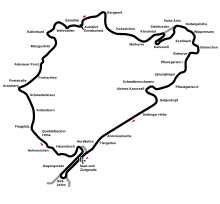
The 1959 Portuguese Grand Prix was a Formula One motor race held at Monsanto on 23 August 1959. It was race 7 of 9 in the 1959 World Championship of Drivers and race 6 of 8 in the 1959 International Cup for Formula One Manufacturers. It was the eighth Portuguese Grand Prix and the second to be held for the Formula One World Drivers' Championship. It was the third time the race was held at Monsanto and the first for Formula One. The race was held over 62 laps of the five kilometre circuit for a total race distance of 337 kilometres.

The 1959 Italian Grand Prix was a Formula One motor race held at Monza on 13 September 1959. It was race 8 of 9 in the 1959 World Championship of Drivers and race 7 of 8 in the 1959 International Cup for Formula One Manufacturers. It was the 29th Italian Grand Prix and the 24th to be held at Monza. The race was held over 72 laps of the five-kilometre circuit for a total race distance of 414 kilometres.
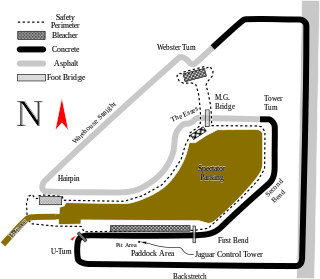
The 1959 United States Grand Prix was a Formula One motor race held on December 12, 1959, at Sebring International Raceway in Sebring, Florida. It was the last of 9 races in the 1959 World Championship of Drivers and the 8th and final in the 1959 International Cup for Formula One Manufacturers.It was the second United States Grand Prix, and the only occasion the race was held at the home of the 12 Hours of Sebring endurance sports car race, the Sebring International Raceway in Florida. The race was held over 42 laps of the 8.36-kilometre circuit for a total race distance of 351 kilometres.
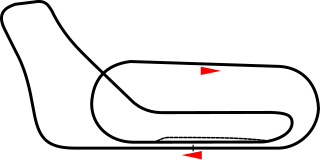
The 1960 Italian Grand Prix was a Formula One motor race held at Monza on 4 September 1960. It was race 9 of 10 in the 1960 World Championship of Drivers and race 8 of 9 in the 1960 International Cup for Formula One Manufacturers. The race was won by American driver Phil Hill driving a Ferrari 246 F1.
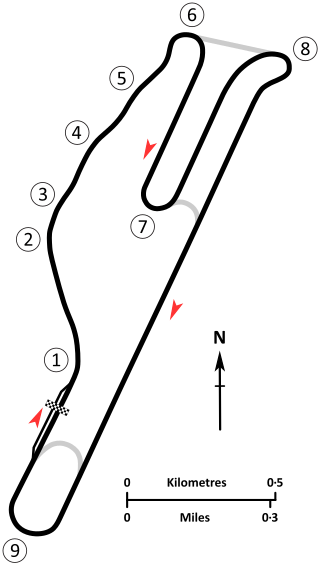
The 1960 United States Grand Prix was a Formula One motor race held on November 20, 1960, at Riverside International Raceway in Riverside, California. It was race 10 of 10 in the 1960 World Championship of Drivers and race 9 of 9 in the 1960 International Cup for Formula One Manufacturers.
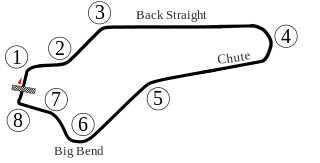
The 1961 United States Grand Prix was a Formula One motor race held on October 8, 1961, at the Watkins Glen Grand Prix Race Course in Watkins Glen, New York. It was the eighth and final race in both the 1961 World Championship of Drivers and the 1961 International Cup for Formula One Manufacturers.

The 1962 United States Grand Prix was a Formula One motor race held on October 7, 1962, at the Watkins Glen Grand Prix Race Course in Watkins Glen, New York. It was race 8 of 9 in both the 1962 World Championship of Drivers and the 1962 International Cup for Formula One Manufacturers. The 100-lap race was won by Lotus driver Jim Clark after starting from pole position. Graham Hill finished second for the BRM team and Cooper driver Bruce McLaren came in third.
The 1967 Formula One season was the 21st season of FIA Formula One motor racing. It featured the 1967 World Championship of Drivers and the 1967 International Cup for F1 Manufacturers, contested concurrently over an eleven race series which commenced on 2 January, and ended on 22 October. The season also included a number of non-championship races for Formula One cars. Denny Hulme won the World Championship of Drivers and Brabham-Repco was awarded the International Cup for F1 Manufacturers.
The 1966 Formula One season was the 20th season of FIA Formula One motor racing. It featured the 1966 World Championship of Drivers and the 1966 International Cup for F1 Manufacturers which were contested concurrently over a nine-race series that commenced on 22 May and ended on 23 October. The season saw the "return to power" with the introduction of the '3 litre formula', doubling maximum engine capacity from 1.5 litres. Jack Brabham won the World Championship of Drivers and Brabham-Repco was awarded the International Cup for F1 Manufacturers.

The 1962 Formula One season was the 16th season of FIA Formula One motor racing. It featured the 1962 World Championship of Drivers and the 1962 International Cup for F1 Manufacturers which were contested concurrently over a nine race series that commenced on 20 May and ended on 29 December. The season also included a number of non-championship races for Formula One cars.

The 1961 Formula One season was the 15th season of Formula One motor racing. It featured the 1961 World Championship of Drivers and the 1961 International Cup for F1 Manufacturers, which were contested concurrently from 14 May to 8 October over an eight race series. The season also included numerous non-championship races for Formula One cars.
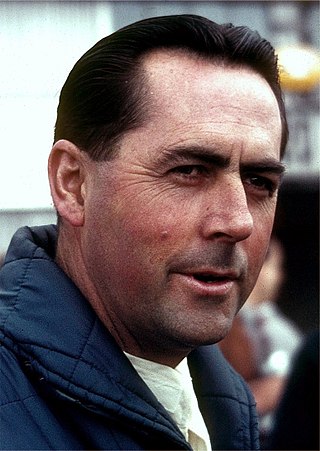
The 1960 Formula One season was the 14th season of the FIA's Formula One motor racing. It featured the 11th FIA World Championship of Drivers, the third International Cup for F1 Manufacturers and numerous non-championship Formula One races. The World Championship commenced on 7 February and ended on 20 November after ten races.
The 1959 Formula One season was the 13th season of FIA Formula One motor racing. It featured the 1959 World Championship of Drivers and the 1959 International Cup for F1 Manufacturers, contested concurrently over a nine-race series which commenced on 10 May and ended on 12 December. The season also included several non-championship Formula One races.
The 1957 Formula One season was the 11th season of FIA Formula One motor racing. It featured the 1957 World Championship of Drivers, which commenced on 13 January 1957 and ended on 8 September after eight races. Juan Manuel Fangio won his fourth consecutive title, his fifth in total, in his final championship. A feat that would not be beaten until Michael Schumacher in 2003. The season also included numerous non-championship races for Formula One cars.

Wolfgang Alexander Albert Eduard Maximilian Reichsgraf Berghe von Trips, also known simply as Wolfgang Graf Berghe von Trips and nicknamed 'Taffy' by friends and fellow racers, was a German racing driver. He was the son of a noble Rhineland family.
Charles Anthony Standish Brooks was a British racing driver also known as the "Racing Dentist". He participated in 39 Formula One World Championship Grands Prix, competing for the first time on 14 July 1956, and achieved six wins, 10 podium finishes and 75 career points. He was third in the World Drivers' Championship in 1958 with Vanwall and second in 1959 with Ferrari. He also scored the first win by a British driver in a British car in a Grand Prix since 1923, driving a Connaught at Syracuse in 1955 in a non-championship race.
Rob Walker Racing Team was a privateer team in Formula One during the 1950s and 1960s. Founded by Johnnie Walker heir Rob Walker (1917–2002) in 1953, the team became F1's most successful privateer in history, being the first and only entrant to win a World Championship Formula One Grand Prix without ever building their own car.

The Cooper T51 was a Formula One and Formula Two racing car designed by Owen Maddock and built by the Cooper Car Company for the 1959 Formula One season. The T51 earned a significant place in motor racing history when Jack Brabham drove the car to become the first driver to win the World Championship of Drivers with an engine mounted behind them, in 1959. The T51 was raced in several configurations by various entrants until 1963 and in all no less than 38 drivers were entered to drive T51s in Grand Prix races.
The 1960 Formula Two season was the last season of 1.5 litre Formula Two racing which was to become Formula One for 1961. Two championships were held over the same five events, the Formula Two Constructors' Championship and the Formula Two Drivers' Championship, in addition to many non-championship Formula Two events. The Constructors' Championship was won in a draw by Cooper-Climax and Porsche, while the Drivers' Championship was won by Jack Brabham.
